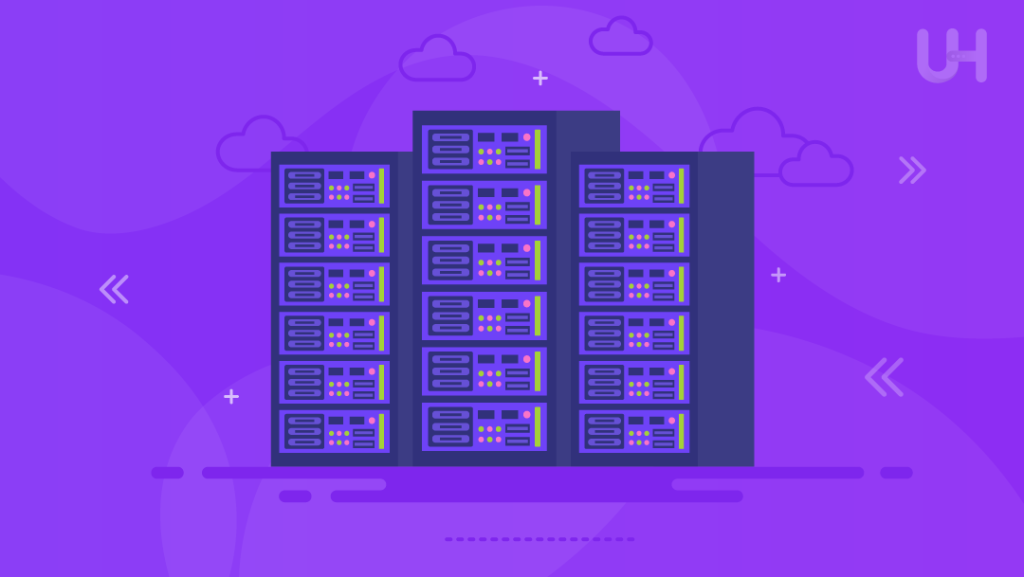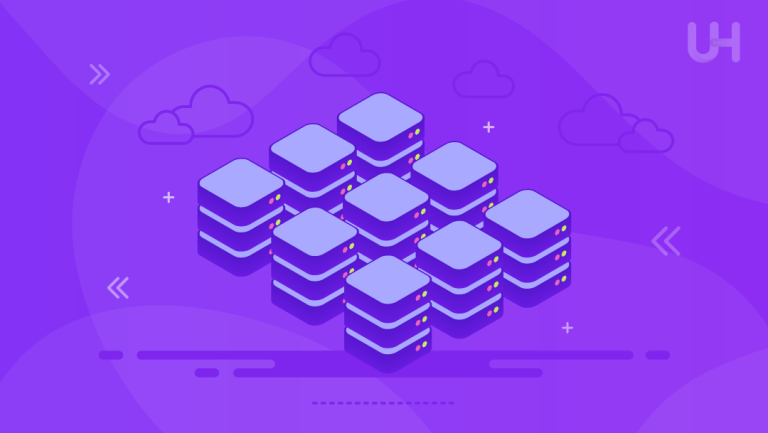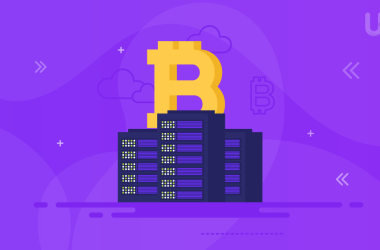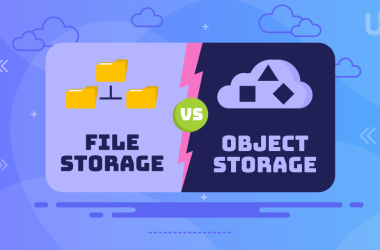Data centers are the backbone of modern digital infrastructure, providing the storage, processing power, and networking capabilities needed to support everything from websites and mobile apps to enterprise software and cloud services. As the demand for data storage and processing continues to grow with the rise of cloud computing, artificial intelligence, and big data, businesses rely heavily on data centers to ensure continuous access to information and services. In today’s evolving IT landscape, the debate between traditional vs hyperscale data centers highlights the growing need for scalable, efficient solutions to manage increasing data demands.
As technology evolves, a debate has emerged between traditional and hyperscale data centers. Traditional data centers have long been the standard for many organizations, offering on-premise solutions tailored to specific business needs. However, hyperscale data centers, built by tech giants to support massive global operations, are reshaping the landscape. Whether for storing vast amounts of customer data or running critical applications, the importance of reliable, secure, and scalable data centers has never been more crucial.
Traditional Data Centers
Organizations own, operate, and manage traditional data centers to meet the strict requirements of their specific businesses. Equipment such as servers, networking equipment, and storage systems used for processing and storing data resides in these centers. Traditional data centers are usually customized to fit the exact requirements of an organization. Traditional data centers offer businesses control over their infrastructure, security, and maintenance. In a traditional data center, IT resources like a server or cloud storage would be occupied with dedicated functions or applications. They typically serve local or regional operations. Because they rely on manual management, traditional data centers require significant investment in personnel and maintenance to keep them running and available. This development was driven by the need to optimize the use of server resources, reduce costs, and enhance the flexibility of colocation data center operations.
Architecture and Design
Traditionally, organizations designed data centers with centralized hardware, customizing all of them to meet their specific business needs. Configurations existed on all three elements: storage, networking, and compute capacity. Organizations generally build these infrastructures to handle predictable workloads with fixed resources. However, this design offers little flexibility for scaling up or responding quickly to sudden increases in demand. Expanding capacity usually requires significant resources, including new hardware and setup time, making it a resource-intensive process. This rigidity can present major challenges for organizations whose information and processing needs are commonly shifting or increasing.
Scalability and Performance
Scalability is a major challenge in traditional data centers. Adding capacity requires substantial investment in new hardware, physical space, and sometimes additional power and cooling resources. The existing infrastructure tightly links the scalability and performance of these data centers. As organizations need more upgrades, such as increased processing or storage, the process becomes more complex and expensive. Scaling up often involves acquiring new servers and reconfiguring systems, which can lead to outages and higher operational costs. This makes traditional data centers less responsive to the fast-changing needs of modern businesses. This includes application hosting platforms for software as a service, storage-related solutions, and virtual machines using Vm hosting. When choosing between Traditional vs Hyperscale Data Centers, it’s essential to consider scalability and long-term growth potential.
Cost and Efficiency
Traditional data centers have very high investment costs in hardware and infrastructure to construct or rent physical space. After the initial investment, ongoing costs include power usage, cooling systems, and maintaining a dedicated staff to manage and service the equipment manually. Since these centers do not scale dynamically, they are less effective in handling growing or fluctuating data demands. This often leads to underutilized resources or costly capacity upgrades when limits are reached. Therefore, the fixed cost makes traditional data centers more cost-intensive and less flexible over time.
Energy Usage and Sustainability
Many consider traditional data centers highly energy-consuming because they use significant power to keep hardware running and maintain optimal temperatures. Organizations often overlook sustainability in these centers, as they rely on outdated equipment and conventional cooling techniques that are not energy-efficient. The constant need for power and cooling makes it difficult for traditional data centers to meet modern environmental standards or adopt greener practices. This inefficiency results in higher operational costs and a larger carbon footprint compared to newer, more sustainable data center designs.
Security and Management
Traditional data centers are onsite and managed by in-house IT teams responsible for the maintenance of operations and security. This will allow the organizations to fully take control of their security arrangements and, therefore adapt to a wide range of measures tailored to their specific needs. However, most traditional security management requires hard work to ensure constant monitoring, updating, and carrying out physical checks. This approach can be manpower-intensive and time-consuming, requiring very skilled personnel to ensure that infrastructure and security standards remain valid with security standards that are in constant evolution.
Unlock the power of seamless data management
Ready to elevate your business with cutting-edge infrastructure? Boost your performance with UltaHost’s Fully Managed Dedicated Servers. Get started today and experience unmatched scalability, security, and efficiency!
Hyperscale Data Centers
These hyperscale data centers are extensive facilities, designed to tackle large-scale demand for cloud computing and processing. Tech giants like Amazon, Google, and Microsoft build hyperscale data centers to support high-scale global operations and services. These centers deliver vast amounts of computational power and storage, enabling companies to scale up quickly and reach millions of users worldwide without disruption. Networking equipment like routers, switches, and web application firewalls also play a critical role in ensuring internal as well as external connectivity. Businesses using reliable dedicated servers can make their choices based on the quantity of space, power, and bandwidth needed, thus finding the solution pretty flexible.
Architecture and Design
Designers create hyperscale data centers with modularity in mind to facilitate easy scaling. Operators can add or remove resources depending on changing workloads. The architecture is also optimized for efficiency, as infrastructure components can be reused in various patterns. It increases deployment and maintenance simplification. Operators can deploy and support modules independently or across multiple modules, allowing for rapid additions without downtime.
In addition, these data centers rely on extensive automated management systems to improve their operational efficiency. Resource monitoring and management in real-time push the chance of reducing the involvement of humans to the lowest points. Thus, eliminating errors in work done by humans. This configuration ensures reliability. Hyper-scale data centers are constructed for simple integration into the cloud platform. It can easily manage varied workloads like big data analytics, applications running artificial intelligence, etc.
Scalability and Performance
Hyperscale data centers are designed for fast and dynamic scalability. Organizations can add capacity without much human intervention. Flexibility is very essential to allow the accommodation of sudden spikes in demand. It can quickly shift between different workloads without there being a huge delay or manual reconfiguration. It sets of consistent high performance through the utilization of advanced technologies and optimized configurations. The services are made reliable and responsive, even during peak usage periods. This can help greatly in user experience, and definitely and efficiently manage resources by reducing downtime risk. It ensures that continuity of business operation in global networks is attained.
Cost and Efficiency

Hyperscale data centers achieve economies of scale, where the cost per unit decreases as capacity increases. They apply standardized components and processes across multiple facilities to accomplish this. Thereby reducing the costs associated with procurement, maintenance, and management of the hardware in the facilities. Additionally, in hyperscale data centers, automation results in lower costs because it minimizes manual intervention in most routine operations.
Automated systems can optimize resource distribution, track performance, and manage energy consumption, thereby bringing about sizeable reductions in operational costs. With such data centers growing in scale, their efficiency only increases, making them the best option for corporations. Traditional vs Hyperscale Data Centers differ significantly in cost management, with hyperscale offering more efficiency at scale.
Energy Usage and Sustainability
Hyperscale data centers are more oriented toward minimizing energy intensity and efforts on sustainability, frequently incorporating renewable energy, wind, or hydroelectric power to reduce the impact on the environment. This aspect of sustainability shows up in the manner of operation and becomes the modus operandi for most hyperscale data centers, since most of them use innovative cooling techniques liquid and free-air cooling, with huge reductions in consumption over traditional cooling methods.
Furthermore, the advanced power optimization technologies watch and manage energy consumption, ensuring no waste in resource usage. That focus on such sustainable practices provides hyperscale data centers with benefits not only in terms of lowering carbon footprint but also in keeping up with the trend in the tech world where there is a growing need for responsible environmental measures. Energy efficiency is a key factor when comparing Traditional vs Hyperscale Data Centers, with hyperscale centers leading in sustainability.
Security and Management
Hyperscale data centers adopt elaborate security protocols in combination with automated monitoring and response systems that check for a multitude of threats. These systems are constantly assessing the environment, which means they would be in an excellent position to detect openings and strongly respond to security-related events, thereby improving general protection without depending on human monitoring. The hyperscale data center uses distributed management practices that typically include sophisticated software for monitoring performance, uptime, and efficient distribution of resources.
The combination of these advanced security measures with best practices in management helps maintain high reliability and security, which are more or less essential factors in hyperscale data centers for supporting big-sized mission applications. Future trends in hyperscale data centers include the integration of emerging technologies like AI and edge computing, which enhance operational efficiency and reduce network latency. The decision of Traditional vs Hyperscale Data Centers impacts how businesses handle fluctuating data demands and workloads.
Here’s a table highlighting the differences between traditional and hyperscale data centers:
| Aspect | Traditional Data Centers | Hyperscale Data Centers |
|---|---|---|
| Design | Centralized, customized hardware | Modular design for easy scaling |
| Management | Manual management | Automated management systems |
| Scalability | Limited, complex, and costly to scale | Quick and dynamic scaling |
| Energy Efficiency | Often energy-intensive, using outdated equipment | More energy-efficient, utilizing modern techniques |
| Cost Structure | High initial and ongoing operational costs | Lower per-unit costs due to economies of scale |
| Flexibility | Less flexible, tailored for predictable workloads | Highly flexible, adapts to variable workloads |
| Usage | Suitable for local/regional operations | Designed for global operations and services |
| Deployment Speed | Slower, requires significant setup time | Rapid deployment with minimal downtime |
| Suitability | Ideal for specific business needs | Best for large-scale operations and cloud services |
Conclusion
In conclusion, traditional and hyperscale data centers represent two distinct approaches to managing data and computing needs. Designers create hyperscale data centers with modularity in mind to facilitate easy scaling. Operators can add or remove resources depending on changing workloads. The architecture is also optimized for efficiency, as infrastructure components can be reused in various patterns.
In contrast, hyperscale data centers offer rapid scalability, automated management, and energy efficiency, making them well-suited for handling the demands of modern cloud computing and large-scale operations. As businesses grow, understanding the differences between Traditional vs Hyperscale Data Centers helps in selecting the right infrastructure.
Experience seamless performance and scalability with UltaHost’s unlimited bandwidth Virtual Private Server. Our infrastructure ensures optimal reliability for your virtual servers. Benefit from optimum flexibility, unlimited bandwidth, and performance at an unbeatable price.
FAQ
What are the main differences between Traditional or Hyperscale Data Centers?
Traditional data centers are on-premise, customized, and manually managed, while hyperscale data centers focus on rapid scalability and automation for large-scale cloud computing.
How does scalability differ in Hyperscale vs Traditional Data Centers?
Traditional data centers require significant investment for scaling, whereas hyperscale data centers allow for quick, dynamic adjustments to resources.
Which is more energy-efficient in Traditional vs Hyperscale Data Centers?
Hyperscale data centers are generally more energy-efficient, utilizing modern cooling techniques and renewable energy, unlike traditional data centers.
Can traditional data centers support large-scale operations?
Yes, but they lack the optimization and flexibility that hyperscale data centers offer for large-scale operations.
What role does automation play?
Hyperscale data centers rely heavily on automation for efficiency, while traditional data centers often depend on manual management.
Are there downsides to traditional data centers?
Yes, they can be costly to maintain and scale, making them less adaptable to changing business needs compared to hyperscale options.
How do costs compare in Traditional vs Hyperscale Data Centers?
Traditional data centers involve high initial and operational costs. Hyperscale data centers benefit from economies of scale, leading to lower costs as capacity increases.












